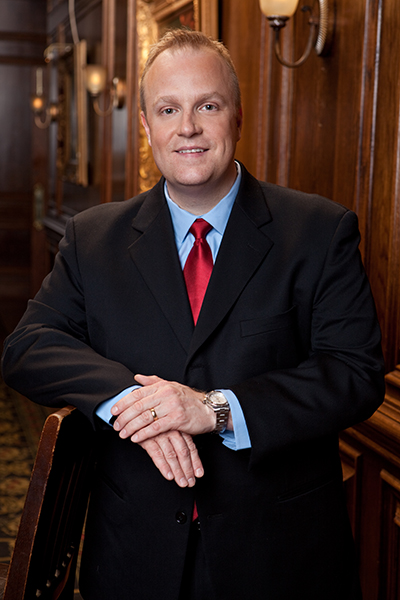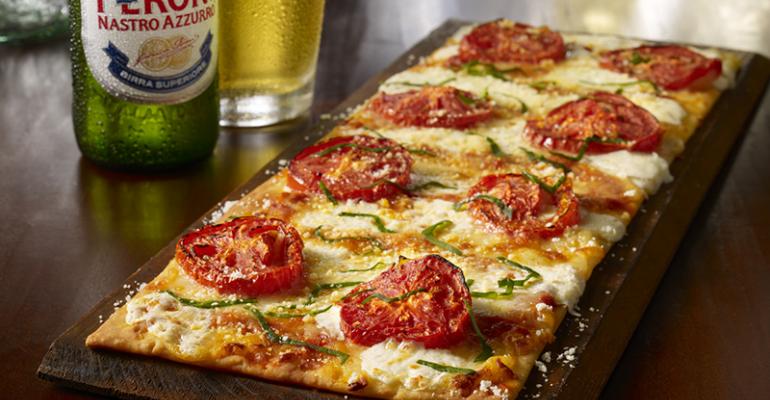
Larry Konecny, vice president of innovation and restaurant support, Maggiano’s Little Italy.
As a “go-to” for special events, I have always been impressed by the consistent quality of food and level of service. I wanted to learn more about what makes this impressive casual-dining chain run so smoothly, so I reached out to the Larry Konecny, vice president of innovation and restaurant support.
Konecny has been with Brinker International Inc., parent to Maggiano’s, since 2002, and has risen through the organization’s ranks through the operations division. In his current role, Konecny is responsible for Maggiano’s marketing and banquet strategies, as well as menu innovation. I found a refreshingly different perspective from an operator who moved into a marketing leadership role.
Coming from operations, what was your first reaction to marketers? What do you wish marketers knew that would have made life easier for an operator?
I have worked both with marketers who were collaborative and field focused, and others who made me feel that the guest understanding was beyond me, and that the marketing was done “to me” rather than “with me.” As I made the transition from operations to marketing, I promised myself I would not follow the latter.
Poor decisions can make life incredibly difficult for an operator, and the last thing I want to do is complicate the business without driving incremental traffic or sales. That said, my job is now to drive sales and attract more guests, and the hardest thing as a marketer is to be the voice always saying: “The status quo isn’t good enough.”
To me, the key is to leverage the talent in our restaurants. Restaurant managers and chefs can adjust to just about any environment, and they can muscle though whatever promotion or new idea you throw at them. However, that same restaurant team is also responsible for communicating the message of a new menu item or promotion to the guest.
I’m learning that in marketing, especially in a brand as complicated as Maggiano’s, with a scratch kitchen and 150 teammates in every restaurant, a “C” idea that is well executed is still a “C” idea, but even an “A” idea executed poorly will not connect with the guest.
Here are some tips I’m learning, sometimes by making mistakes:
• Work some busy shifts. When you are testing a new menu item, for example, you convince yourself that results are just what you see in the sales sheet or the mix tracking. But you can learn a lot by doing, and marketers need to be more confident spending a shift working the drive-thru or assisting servers in the dining room. A lot of marketers fear this, but remember: We take untrained teammates and train them how to be a server or line cook. We can do the same for you.
• Take time to really listen to the folks on the front line. For example, savvy chefs can tell you what sells by “reading the trash,” what comes back uneaten on plates. Servers get numerous comments that can give clues about value. [Be careful because you] can end up making decisions by anecdote, so the key is to integrate both quantitative and qualitative research. I’ve found that when data is combined with the real world, actionable insights are almost always uncovered.
• Be transparent. Our entire team is one big chain, and there is not an unimportant link. My hope is that everyone understands and can articulate what we are doing, especially those closest to the guest. I believe in listening to operator feedback constantly, but then never losing sight of the guest, which can happen when you are at the point of the spear, and you know how hard big ideas are to execute. I think because marketers are always selling to franchisees and operators, we convince ourselves [that every idea has to have a strong sales impact or it is not worth presenting.] I’d rather be open and transparent and almost brutal on what the guest and data says.
What has been your biggest challenge in transitioning from operations to marketing?
The time it takes from idea to execution across 51 restaurants, even in an organization as nimble and entrepreneurial as Maggiano’s. Financial analysis, supply chain coordination, training material development: These things all take time. As a manager, I could throw together a wedding reception with customized food in a few days, but you can’t move that fast when you are moving 51 $9 million restaurants that serve 6,000 guests a week. That said, in this industry, speed counts, and we are striving to always get faster, without skipping over the voice of the guest or the buy-in of the team.
How do you refresh and rejuvenate a brand like Maggiano’s, which has so much heritage, without changing the core of the brand?
Our guests have a deep reservoir of affection for us. Many spent their child’s bat mitzvah, high school graduation party, rehearsal dinner or grandmother’s funeral observance with us. This creates a bond most brands envy. And yet dietary and experience expectations are evolving faster than I’ve seen in my lifetime.
The key is to understand what we own, and then evolve to the needs of a new generation. For example, we have a 25-year reputation as a great place for sharing food, and now we have a bruschetta bar where guests can mix and match chef-crafted dishes with scratch ingredients like Nueske bacon and seasonal pears. It’s the same 25-year equity of sharing, but to a 25-year-old guest it is much more attractive than ordering a giant plate of lasagna. It is so tempting in this category to chase other brand’s equities. Our job is to mine the equities we own for a new generation.
What is your advice to brands on using consumer insights?
Balance qualitative and quantitative, and understand the limits of each. Each year, we do a deep dive on CREST diary panels [from The NPD Group] to understand eating trends, for example, but now we follow up by taking 200 guests to one-on-one dinners across the country to explore how they are eating different. We are even involving our chefs.
We have to teach and discipline ourselves not to lead the witness or reinforce our own biases. We learn how to ask broad questions and really listen, but just as marketers need to learn more about recipes and scratch kitchens, our chefs need to understand more about how to really learn from interviews. Then you balance brain and gut to an educated guess. (Prayer and a glass of wine helps, too.)
How have you put Maggiano’s on the map as a local favorite?
Our private dining business allows us to connect in our neighborhoods just like an independent restaurant, but now we are going further.
We’ve always had chef’s special features… They were developed by our head chefs and changed every 60 to 90 days. Now we invite chefs from our restaurants in twice a year for giant cook-offs. (Yes, I get paid to eat 20 variations of seafood pasta in four hours.) Then the restaurants vote on the dishes they want to feature every 30 days.
This process gives an outlet for our talented, young chefs who want to cook, create and see their hard work loved by guests, but they also want two days off a week; the security, support and opportunity of a great company like Brinker International; and avoid mortgaging their kids’ future on a restaurant whose appeal will disappear in 36 months.
This month, for example, the guests in Los Angeles are eating langostino pasta developed by our local chef Alberto Bini, and the guests in Boston are devouring an Italian cream cake developed by local sous chef, Steve Dalton. Our supply chain partners work hard to make this possible across 51 restaurants, which is not easy.
What are three things marketers must pay attention to in the next five years?
Authenticity is important, and it isn’t just for Millennials. Regardless of generational cohort, there is a consistent theme of stay true to who you are. As we create new dishes and platforms, with a little storytelling, connections can be made. However, if we venture too far away from what is deemed credible, we know right away. We still will attempt to push the boundaries; we just have to be quick to make adjustments. The key for us is to integrate trends into something that is unique, but still Maggiano’s.
The digital evolution levels the playing field. We invest heavily in our food, our service and our buildings. When it comes to marketing spend, we don’t have the same penetration as others. However, the digital space is making it much easier because we are able to get incredibly narrow in our targeting. If we want to reinforce sharing and customization to Millennials, we can do that. If we want to narrow our Lighter Take platform to another demographic, we can do that as well. Digital is also allowing us to gain loyalty-program-like insights without the heavy investment of a formalized loyalty program.
The creative matters. One place we do splurge a little is in our food photography. We have the best chefs creating amazing food, and we are careful in sourcing ingredients, so we want to make sure that we highlight the hard work and investment.

